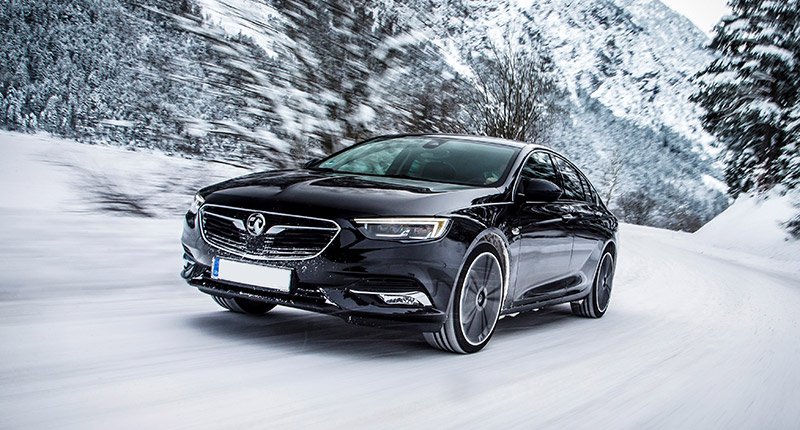Top tips for driving on the roads this winter
The UK continues to face poorer weather, with regular storms causing trickier conditions. That’s especially true for drivers.
Of course, we’ve always faced adverse weather, but the frequency of storms poses greater challenges and potential dangers you need to be aware of. If conditions are so poor, and if a severe enough weather warning is issued by the Met Office, you should think twice about heading out on the roads but all but essential journeys.
But if you do find yourselves driving and the weather takes a turn for the worse, it’s important to be prepared. We’ve got some top tips that apply for all weather and then specific advice for driving in particularly adverse conditions.

Make sure your car is prepared for all weathers
Regardless of which weather you’re driving in, making sure your car is prepared is paramount. The last thing you want is to have an avoidable breakdown or compromise your safety if the car is in poor shape.
If there are any advisories mentioned on your car’s last MOT certificate, which you can check online, it’s worth having these addressed, especially when concerning your brakes and tyres. Make sure your car has recently been serviced, too.
After this, perform your own checks. You should inspect your car’s tyres regularly to see that they have plenty of tread – 1.6mm is the legal minimum but in poor weather it’s recommended to replace them much sooner – but also for any damage that could increase the likelihood of a puncture. Making sure your car’s fluid levels – oil, coolant and washer fluid – are all sufficiently topped up will help too.
We’d also recommend ensuring your wipers are in good working order and checking that you have plenty of fuel - or charge in the case of an electric car - before setting off in adverse conditions.
Make sure you are prepared
It’s not just the car that needs to be prepared for whatever the weather, but also you as well. It’s worth having emergency supplies in the car, such as food with long shelf lives, bottled water as well as a first aid kit.
Similarly, make sure you have appropriate clothing for the conditions, such as a warm coat and boots for if you happen to find yourself stranded.
Driving in rain and floods
The UK has been facing increasingly heavy rain showers in recent years, with flooding far more common. It’s one of those weathers that you’re more likely than ever to find yourself driving in.
As with any bad weather, you should slow down and drive to the conditions – in France, for example, a lower speed limit comes into force in wet conditions. Though it’s not the law in the UK, dropping your speed will reduce the chance of a collision, with aquaplaning common in bad weather.
It’s a good idea to switch on your headlights too. Don’t think this will happen automatically and while it’s tempting to turn on your fog lights don’t do so unless visibility is severely limited, as it can dazzle other motorists. Increase your distance between other vehicles as braking distances shoot up on wet roads, while also keeping your air conditioning on as this will help stop your car’s windows from fogging up
When it comes to floods, if you have any doubts about how deep the water is, we strongly recommend turning around and avoiding going through it as flood water can ruin your engine and even write the vehicle off. If you believe you can safely drive through flood water, keep your engine in a low gear with high revs, allowing you to keep momentum. However, avoid driving at speed through a flooded section as the high water level could cause water to go into your engine.
Driving in ice and snow
Many of the same principles apply in snow driving as they do in rain, especially reducing your speed – albeit far more so in wintery conditions – and making sure there’s a significant gap between you and the vehicle ahead. More so than any other weather condition, it’s important to go prepared with plenty of warm clothes for all occupants, lots of supplies and even a shovel could prove useful if you find yourself stuck.
When driving in snow and ice, you want to limit the wheels slipping as much as possible, so accelerate and brake as gently as possible, and change up gears faster than you might do normally. Use a low gear for going downhill as well so the effect of engine braking can slow down the car more.
If you find yourself skidding, steer gently into it, meaning that if the back end of the car is sliding to the right, steer into it by turning it right. Don’t be tempted to jump on the brakes either as this will only make matters worse.
Driving in strong winds
There are seemingly more and more instances of widespread strong winds across the UK, and it’s important weather to know how to drive in.
First thing first, cut your speed back once again, as the faster you are the more susceptible you are to strong gusts. There is also far more likely to be debris in the road, and if you’re going slower it will give you more time to react accordingly.
In strong winds, you need to be especially aware of other motorists, especially high-sided vehicles such as lorries, double-decker buses and campervans that are most susceptible to side winds, as are cyclists and motorcycles. If overtaking any of these, make sure to give them as much room as possible. Be especially mindful of large open areas where there is no break in the winds, and avoid more exposed routes if possible.
Photo credit: Vauxhall
